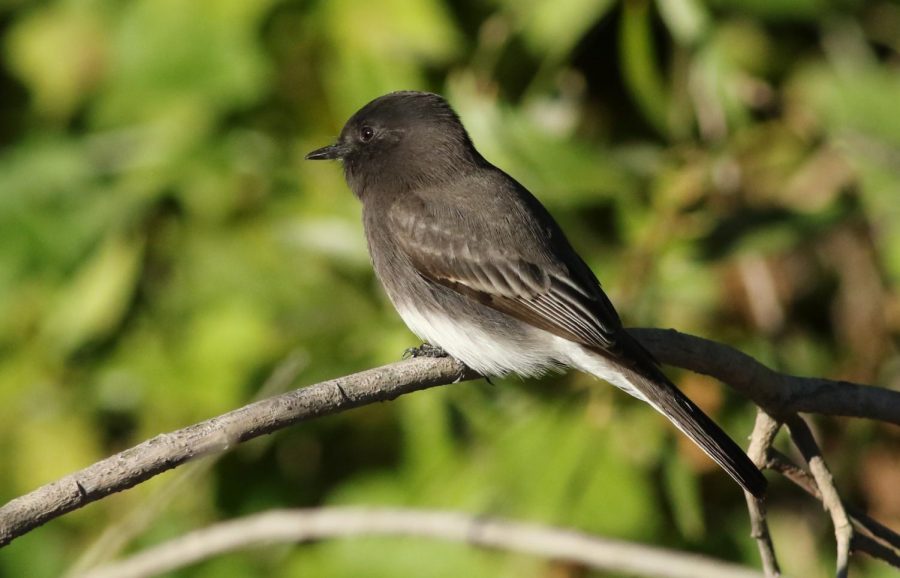Bird Watching 101
November 12, 2021
Birds have played a large role in civilizations for thousands of years. In the grassy plains of early society, hunter-gatherers fed their families with the breast meat of pheasants. Bird calls were used to lead towards water, and sometimes, away from danger. Later, plumes of feathers sat atop royals as a symbol of status and luxury. Today, birds have a larger role than just food or clothing; they take center stage in a growing culture revolving around birdwatching.
In the crisp spring mornings of the pandemic, I would wake up early and begin my day with quite an unusual routine. I would open my windows and, accompanied with a mug of tea, sit silently whilst listening to the cacophony of birds outside. The symphony outside gave me hope. As animal habitats continue to shrink due to human activity, it felt ironic knowing that this time, I was the one confined to a small area. While I was stuck in my room doing online school and hiding from the raging pandemic, the birds outside could fly freely.
Even now, when quarantine confinement no longer exists, I still find simple pleasure in birdwatching. It’s an activity that encourages one to venture into the outdoors, yet, on the other hand, can also be done through the windows of one’s home. Additionally, it requires no human contact! Here’s the way I like to think of it: spotting different birds is like gem collecting. You may know the names of many, but certain birds are rarely seen in Southern California. So, spotting the arching white neck of a Snowy Egret or the astoundingly bright Vermillion Flycatcher is just like striking gold.
So, how can you get started? The first step for any aspiring birdwatcher is to learn your local bird species. There are nearly 10,000 species of birds around the world, but only several hundred can be found in California. The identification process can be made easier by purchasing a field guide to bring along until you begin to recognize different bird species without it. Body shape, patterning, and color are all things that are used to differentiate birds.
An example would be the Dark-eyed Juncos and the Black Phoebe. To a beginner birder, they are almost indistinguishable. The two species are roughly the same size and have similar grey patterns. Upon closer examination, the differences are more obvious.
“Dark-eyed Juncos have a really small, pinkish beak,” adds sophomore Jenna Lam. “The Black Phoebe has a longer, narrower beak.”
Lam is a bird enthusiast, a love she gained by participating in the Ornithology event for Science Olympiad. Through consistent practice, she can now identify nearly 300 bird species.
It just “takes practice,” she says, “Just try to go out and look for birds.”
Going to local parks or any area with a naturalistic landscape would be a way to get started. The Peck Road Water Conservation Park is just 10 minutes from AHS. The area of land was set aside for the preservation of the ecosystem and is bike and pedestrian accessible. Another great location is the Santa Fe Dam. This recreation area is a bit further from Arcadia but is still considered local. The pond makes it a great area to spot aquatic and wading birds such as American Coots, Mallards, and Green-winged Teals.
Of course, the famed Arboretum is another great location to go birdwatching. There are so many different biomes built into the park—desert, bamboo forest, Australian woods, etc —that it has also become home to a diverse group of birds. Here, I’ve spotted Mourning Doves hiding amongst the leaf litter, American Robins pecking and plucking at worms, American Crows that caw eerily in the forest, Canada Geese that squawk angrily at visitors, and, my favorite bird of all, the Red-whiskered Bulbul.
With its blushing cheeks and defined crest, it seems more like an avian doll than a real bird. I’ve been curious as to how the species, native to India and China, somehow ended up here in the suburbs of Los Angeles. Though what really captivated me about the Bulbul was its call. The bird stole my heart when I first spotted one on the wires above my house. I whistled a simple tune to it and a few seconds later it chirped in return.
The simple connection between us lasted a brief minute before it flew away, but it was not something that I will forget anytime soon. Birdwatching is such an easy way to grow an appreciation for the wilderness. The more people understand nature, the more we will want to protect it.
Photographic courtesy of WIKIMEDIACOMMONS.COM

